#galdrabok
Text
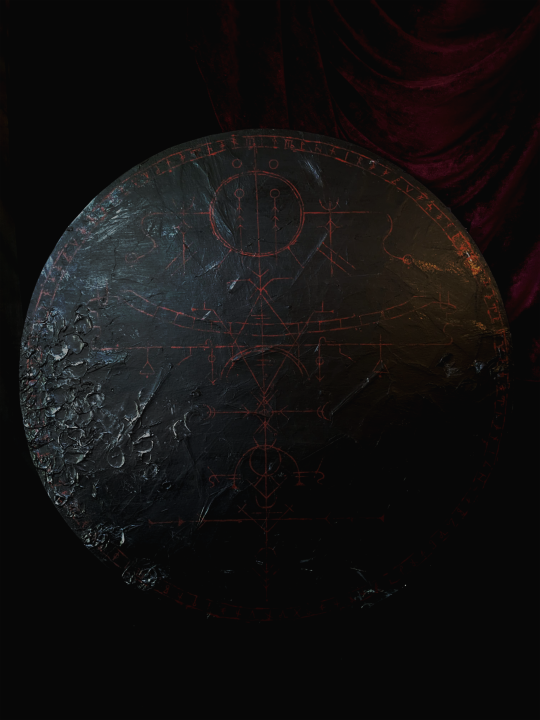
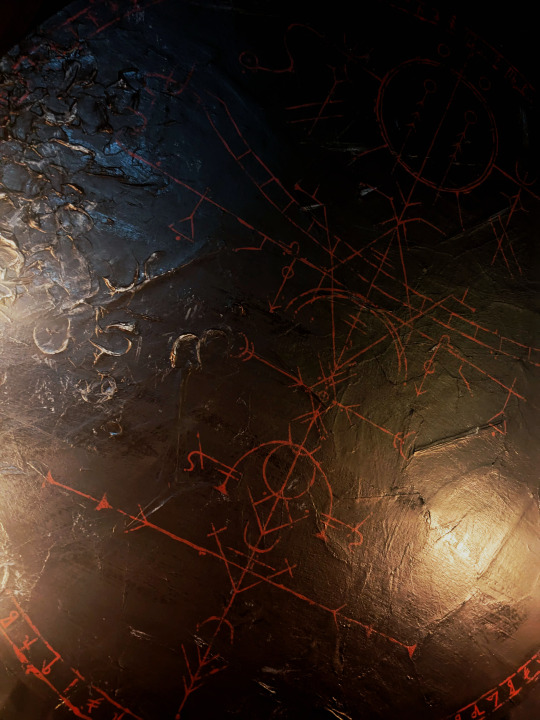
Kelio Perpetua.
Acrylic, putty, and paper mache on 72" diameter canvas.
#my art#art#sigil#sigilcraft#sigil magick#sigil magic#galdr#bindrune#rune magick#dark art#traditional art#witch#witchy art#occult#occult art#stave#stave magic#rune magic#hel#folklore#witchcraft#gothic#galdrabok
11 notes
·
View notes
Photo

vegvísir - Aegishjalmur
78 notes
·
View notes
Text

Sorry mais c’était trop drôle pour ne pas le partager x’D
#lol#witchblr#witchy memes#occult books#old grimoire#icelandic grimoire#galdrabok#galdrabok spell#old spell#old curse#curse#hex#curse of very great farting#funny curse#malédiction#sigil#sigil magic
5 notes
·
View notes
Link
Stafir de insignia real, sigilo europeo antiguo para hechizos (para lección de curso online de Galdr o magia nórdica en Udemy). ¿Sabes cuál es?
DM para encargos --> https://www.instagram.com/dani_e_idiomas/
Crédito: Publicado en Instagram, original de Daniel Lucas Hernández (16/1/2023).
NUEVO CURSO DE INTRODUCCIÓN AL GALDR DE LAS RUNAS Y SIGILOS ESCANDINAVOS
Cupón válido hasta el 5 de febrero con el código ENERO2023
¿Quieres un mejor cupón? Envíame un mensaje privado y te haré uno mejor
https://www.instagram.com/dani_e_idiomas/
https://www.udemy.com/course/galdr-simbolos-magicos-escandinavos-runas-y-bindrunes/?couponCode=ENERO2023
#magic#paganism#pagan#insignia#galdr#galdra#galdrastafr#galdrastafur#galdrastafir#Huld Manuscript#Galdrabok#Galdrabók#Galdrakver#black magic#white magic#solar insignia#insignia solar#sello#simbolo#symbol#symbols#Dani E Idiomas#runes#runas#nordic magic#norse#old norse#staves#bindrune#bandrunar
0 notes
Text
"I carve you eight áss-runes, nine nauð-runes, thirteen þurs-runes, which are to afflict your belly with great shitting and shooting pains, and all these may afflict your belly with very great farting. May your posts split asunder, may your guts burst, may your farting never stop, neither day nor night. May you become as weak as the fiend, Loki, who was snared by all the gods. In your mightiest name Lord God, Spirit, Creator, Óðinn, þór, Freyr, Freyja, Oper, Satan, Beelzebub, helper, mighty God, protect with your followers Uteos, Morss, Nokte, Vitales."
re that magic post
1 note
·
View note
Text
Perhaps not as well-known as other grimoires, the Galdrabok, an Icelandic ‘book of magic’, is one of the most important surviving documents for the practices and understanding of occult practices in Iceland in the late Medieval era. It offers a unique insight into the various elements that contributed to a national magical tradition in Iceland at the time of its compilation.
55 notes
·
View notes
Text
Germanic Magick, Ritual, & Shamanism
Looking at some of the sacred rites and mysticism of the pre-Christian past.
Ritual work is arguably one of the most fascinating aspects of paganism to those seeking to connect with the divine and engage with the native faith of their ancestors. Performing rituals can greatly improve your quality of life and enhance your worship of the divine. Our Germanic ancestors performed an array of religious rites, including ritual burial and sacrificial ceremonies. Many of these rituals were even performed for magickal purposes. This article will explore what type of magick our ancestors believed in, the mystical practices they engaged with, and how we may achieve any of our own metaphysical goals by participating in the ways of our ancestors.
Possibly the most intriguing and discussed form of magick practiced by the Germanic peoples (notably the Norse) is that of seidr, which is used to tell and change the future. Seidr is mostly associated with Freyja, who according to Snorri in the Ynglinga Saga, taught the magick to the Aesir. This type of magick is often associated with women, and seeresses are frequently mentioned in Old Norse sources. The Saga of Erik the Red describes a volva (seeress) named Thorbjorg in Greenland. She possessed a seidstafr and wore a bag that contained talismans “needful to her in her wisdom.” A similar staff was discovered buried alongside a woman in Fyrkat, Denmark. Furthermore, Cassius Dio mentions a seeress named Ganna who belonged to the Semnoni tribe in Book 56, dating back to the 3rd century. In Bidford, England, the remains of a woman were discovered in 1971. Along with the skeleton were several grave goods, including small pendents which were thought to be some type of magickal tool. Scholars claim that the woman was likely a magick practitioner, pre-Christian priestess, or healer. Moreover, Woden receives a vision from a seeress in Voluspa. Matter of fact, Woden is associated with seidr, though it was frowned upon for men to partake in such magick because it was viewed as “unmanly.”
The Germanic heathens believed in another form of magick known as galdr. Galdralag is a type of poetic meter used for magickal intent. It is a form of ljothatal and is featured in portions of the Havamal. In Grogaldr, Groa is summoned from the grave to aid her son Svipdagr. She casts nine incantations in order to protect him on his journey. The Eggja runestone found in Sogn, Norway, dating back to approximately the 7th century, is thought to be galdralag intended to provide protection for the deceased. Magickal poetry is found all across Northwestern Europe. It is extremely prevalent in the medical manuscripts of the Anglo-Saxons such as the Lacnunga. The Lacnunga features the Nine Herbs Charm in which Woden uses nine different plants. In Germany, two charms known as the Merseburg Charms were recorded during the 10th century. The first Merseburg Charm describes how Valkyries freed imprisoned warriors with the words “leap forth from the fetters, escape from the foes.” The second Merseburg Charm tells the tale of Woden healing his son Baldr’s injured horse by speaking the magickal words “bone to bone, limb to limb, like they were glued.” Healing charms are commonly found on gold bracteates, such as the one found in Denmark with the laukar inscription. Laukar is derived from the Proto-Germanic word for “leek,” a plant often used for medicinal purposes. The Anglo-Saxons used charms to heal ailments, but galdr magick specifically is also mentioned briefly in Beowulf. A grimoire known simply as the Galdrabok was compiled sometime during the 17th century. It features several spells and staves, as well as instructions on how to invoke both Christian and pre-Christian spirits.
In his work Germania, Tacitus claims that the Germanic tribes used casting lots for the purpose of divination. He states that they would take a twig from a nut-bearing tree and cut it into small pieces, marking each piece with a symbol. The pieces would then be thrown onto a white sheet while a priest or leader of the family prayed to the gods and chose three pieces at random. Many believe that these symbols described by Tacitus were runes, though scholars argue that they were likely other representative drawings. According to Tacitus, the Germanic peoples also interpreted the behaviors of animals such as birds and horses. Horses have especially been linked to the divine (though that is a topic for a whole other article.) Futhermore, he states that our heathen ancestors predicted the outcome of battle by taking a prisoner from an opposing tribe and forcing them to fight a member of their own tribe. Whoever wins suggests the results of war. Divination is often associated with seidr.
There are many other rituals and magickal practices that have not been extensively recorded. Shamanism is essentially contacting otherworldly spirits or traveling to other incorporeal realms, typically with the goal of achieving some sort of spiritual ecstasy or divine wisdom. Odin is derived from the Proto-Germanic word Wodanaz, meaning “rage”, and the prefix “Od” has similar meanings of “divine fury, frenzy.” For this reason, as well as tales within the Eddas and Ynglinga Saga, Woden is associated with shamanism. Utiseta is a ritual that involves an individual (usually a shaman) sitting out in the wilderness and communing with nature, usually with the aims of connecting to the land spirits, ancestors, or obtain sacred knowledge. It is Shamanistic in nature and linked to seidr. Many are probably aware of Totemism, where warriors would receive the strength from a totem animal. The Ulfhednar were warriors who literally adopted the behavior and strength of a wolf during battle and even dawned wolf hides. Another example of Totemism is different animals being of particular importance to different tribes. Again, we see the veneration of horses among the Anglo-Saxons. The Germanic pagans worshipped the gods through an array of ceremonies and celebrations. Ritual precessions involving a wagon have been recorded and it is likely that they were associated with fertility. A wagon precession dedicated to the goddess Nerthus is described in Germania. The ceremony concludes with the purification of the wagon and drowning of slaves. The Oseberg Tapestry illustrates something similar, and this type of ritual precession has also been attributed to Freyr.
Literary attestations and archaeological evidence indicate that one’s fate and physical wellness were of great importance to the Germanic heathens. Our ancestors lived in times of uncertainty; the rituals they performed and the gods that they worshipped reflected what they viewed to be crucial aspects of their society and that would ensure prosperity to their tribe. Unlike Christianity, the Germanic peoples did not worship the same god. Different gods were venerated and centered depending on what circumstances our ancestors faced. Therefore, we should think deeply about what we hope to achieve through ritual and worship. It might not be possible to completely reconstruct the sacred rites of the pre-Christian past, but we can use what we know as guidelines. Utiseta is a practice that I view as extremely valuable to any pagan, no matter the goal. The modern age has greatly disconnected us from nature, the core of paganism. Sitting out in nature, taking the time to familiarize yourself with your environment and developing a relationship with it strengthens your bond with your ancestors as well as the gods. You will also be acquainted with the land spirits. Paganism is much more than leaving offerings to the gods; it’s about worshipping the world around you, leaving offerings to the spirits that surround you. Paganism forces you to confront your environment. You don’t need to go purchase runes, you can simply pay attention to the behavior of wildlife. You don’t need to purchase anything, that is not what paganism is about. Moreover, think carefully about what goes into a ritual. Nothing is meaningless and everything is connected. There is a reason for the worship of Nerthus mostly taking place at a lake. Fertility deities are often linked to bodies of water, because water may be seen as amniotic fluid or menstrual blood. Everything is symbolic, all that goes into a ritual directly impacts your life. Our ancestors did everything for a reason. So, although we may not be able to perform some of the more elaborate rites of pre-Christian times, we can apply the knowledge, mindfulness, and fluidity to our own practice. Study the world around you, embrace change, and remember that there is meaning in everything.
16 notes
·
View notes
Text
slept in to snuggle with sergeant pepper, first peek at the clock said 11:11. soon as i made my breakfast and sat down, turned on the wifi on my phone a notification pops up: 'downloading galdrabok to drive'. i have never used google drive on this device, nor did i have any idea what a galdrabok was. well anyways, some unexpected light reading for breakfast.
0 notes
Text
You ever read something that leaves you with more questions than answers, not in a thought provoking way but in a wtf happened sorta way? Because I been thinking about what went down between 27 and 28 of the Galdrabók for at least a month now smh
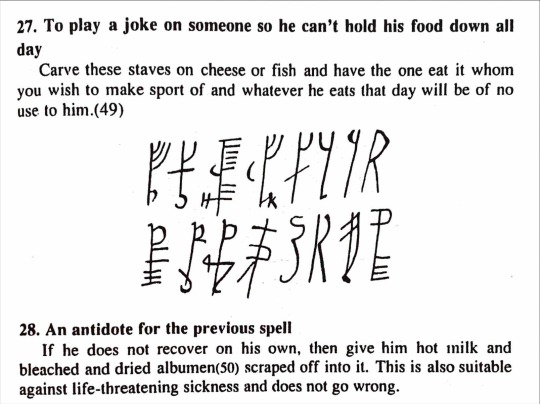
How could this have possibly gone wrong?? It was such a good idea 🙄
#Stephen E. Flowers#the galdrabók#galdrabok#witchcraft#witchblr#spells#grimoire#book of shadows#magic#witch#witchcore#paganism#paganblr
46 notes
·
View notes
Text
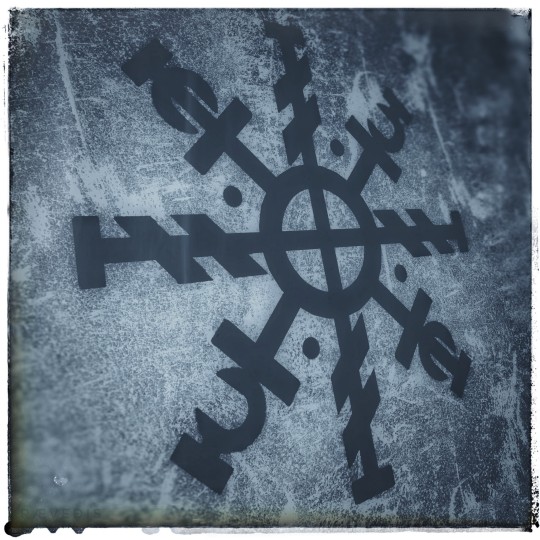
For safe crossing, where there is no turning back
#galdrastafir#sigils#pagan#galdr#heathen#witchcraft#occult#paganism#sigil#chaos sigils#chaos sigil#chaos magic#chaosmagician#chaos magick#galdrabok#galdrabók#ræveðis#Norse#occult art#occultism
291 notes
·
View notes
Text
To win the favor of powerful men
“You should write this and always have it with you, and powerful men will like you very much.”

From The Galdrabók, Stephen Flowers.
15 notes
·
View notes
Text
Sources like the Galdrabok, according to Neil Price, should not be considered as good sources of continued belief of norse sorcery. He states that it has nothing to do with the prior religion.
Source- The Viking Way by Neil Price pg. 61
#galdrabok#norse history#norse mythology#pagan#heathen#magick#norse paganism#heathenry#paganism#pagan worship#Odin#runes#norse magic#norse polytheism#heathen worship#heathen magic#problems in heathenry#scandinavian history#Neil Price#The Viking Way
5 notes
·
View notes
Photo

First day of my challenge to work on my galdrabok every day this month.
#my post#bos#book of shadows#grimoire#galdrabok#my galdrabok#grimspo#witch#witchblr#magic book#herbs#herbology#notebook#doodle#trans witch#male witch#lgbt witch
24 notes
·
View notes
Text
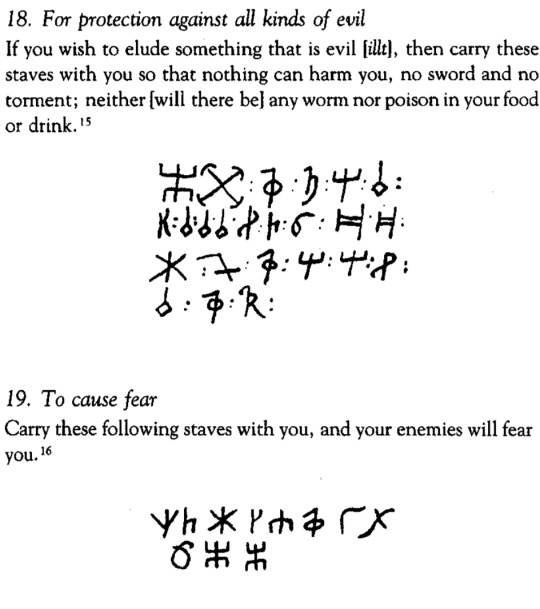
211 notes
·
View notes
Text

I got a new journal!!
#grimoire#witchblr#norse#runes#helm of awe#odin#journal#aesthetic#galdrabok#fafnismal#witch#witchcraft#okay to reblog#okay to copy#craft#practice
61 notes
·
View notes
Text
Hey does anyone know where I can find information on Galdr (not Galdrbók) rune song spells? Singing the runes and such. Book recs or PDFs or any source really would be wonderful.
#norse runes#runes#witchblr#witchcraft#seidr#seidkona#magic#shamanism#galdrabok#galdr#galdrastafir#song magic#spellcraft
34 notes
·
View notes